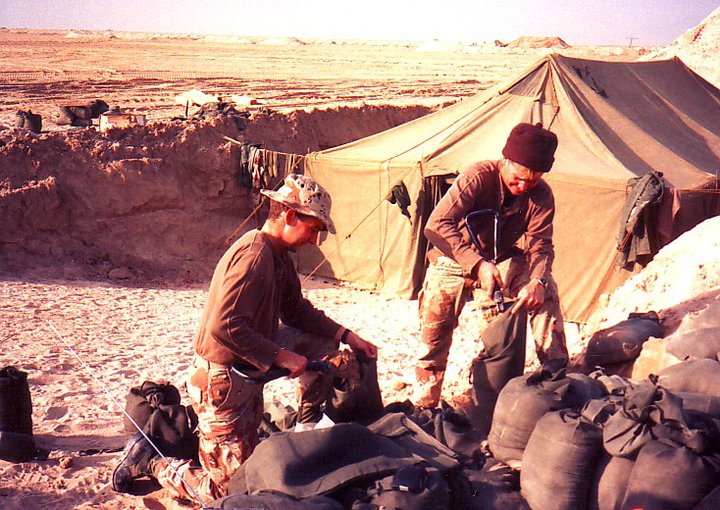After leaving my work for the Marines in 1993, I started work at NIH in 1994. I noticed I was gaining weight and tried to fix the problem. I ate breakfast almost every day and sometimes went for a run at lunchtime. With no shower, that turned out to somewhat impractical, so I took other steps—including the stairs. I tried to cut back how much I ate. Like most Americans, I kept gradually gaining weight and hunger nagged at me, distracting me, no matter what I ate for breakfast.

One day I was in a rush and skipped breakfast, and then because of a busy schedule, I skipped lunch. I realized later that afternoon, when I broke my fast with the leftovers from my daughter’s lunchbox, that hunger hadn’t been a distraction that day. I decided to try it again, and had the same result. I was getting more work done, feeling better and kept it up. When I arrived home, I ate as much as I wanted to.
After a couple of weeks of this, I felt my pants getting looser. My flab felt warm during the day, and that told me the blood vessels in it were busy collecting fat to distribute to the rest of my body for my cells to use as fuel. Instead of lunch, I was “eating” my flab. I kept it up, and 20 weeks later, my 20 extra pounds were gone.
In 2005, the obesity crisis loomed as a national and international emergency. I knew of something that worked for me and my wife, but I didn’t know how it worked. After all, I was eating all I wanted to. It’s a basic requirement that for weight loss to occur, calorie intake has to go down. I couldn’t explain why timing would matter, so I started looking into it.
What I found was shocking. Not only did I find an explanation for why timing could matter, I found that most of the nutritional dogma I thought I knew as fact was the result of successful advertising. Breakfast is the most important meal of the day? Not so, unless it’s the only nutritious meal someone gets! If you eat decently for lunch and or dinner, a morning meal is only “most important” for the cereal manufacturers and other breakfast vendors who don’t give a damn whether it makes you fat or not as long as you buy their stuff.
Another discovery from my research is that there is a well-known (among aging research scientists) way to extend the healthy lifespan of animals. It was not a drug, though, and it couldn’t be packaged, so there was no sales potential and thus no advertising budget to bring it to the attention of the public. The life-extending method is calorie restriction (CR). CR regimens keep the test animals from eating as much as they want to, usually about 20-30% less. The animals don’t wither away—they thrive. It turns out that eating less can be a very healthy choice. There is also evidence that eating less often can provide similar benefits. A study done on monkeys gave mixed results: calorie restriction didn’t seem to matter much if the monkeys ate a healthy diet to start with. Humans live too long and make too many changes in what they eat over their lifespans for a similar study on humans to be done.
Could meal frequency be what separates humans from other animals, which have no trouble maintaining an appropriate weight? I realized that multiple meals and snacking is a fairly recent change in our culture. People used to have to do physical labor to eat. Ice age cave-dwelling people didn’t just roll off their grass mats and pull a jug of milk from the snowbank and a box of Cheerios from a flintstone cupboard—they had to go hunt and gather their food to survive. If they had any food left over from the previous day, it would be rotting or being eaten by bugs, and within a day or two, maggots and grubs—dietary variety for cave dwellers.
With this new understanding, it seemed wrong not to tell people about it, so I wrote a book and put the electronic version online for free. To help people learn about it, my wife Judi joined up with Gary Long on his trek across the country. After seeing Judi walk 20+ miles without eating until the evening, Gary figured he could too, and did. His weight loss accelerated.
We started the Yahoo group, and more people learned about Fast-5. While some people leveled accusations of “binge diet” and “unhealthy” at Fast-5, it quietly went on changing lives and spreading around the world through Yahoo, Facebook and Fast-5.com
In 2012, I was invited to give a TEDx talk about Fast-5 and what I’d learned from users’ experience since publishing the book in 2005. The biggest thing I’d learned is that even though people may obsess about a diet, once they shed their excess weight, the content of the diet is not going to make such a big difference, especially if they neglected to live because of adherence to their chosen diet. In the TEDx talk, I described the foundation of my new book, AC: The Power of Appetite Correction
In 2012-2013, other intermittent fasting tools popped up, and the public relations push behind them (yes, more advertising) has helped intermittent fasting (IF) regimens including Fast-5 find more mainstream acceptance. Still, the biggest hurdle that new Fast-5ers encounter usually isn’t hunger—it’s social resistance and criticism from the entrenched dogma built by the breakfast advertisers.